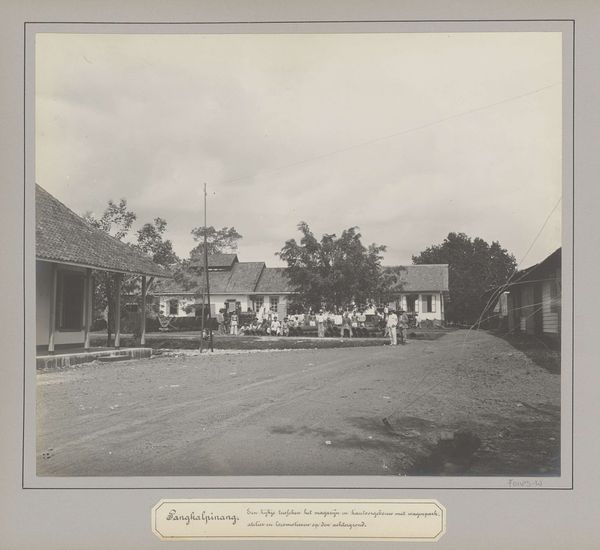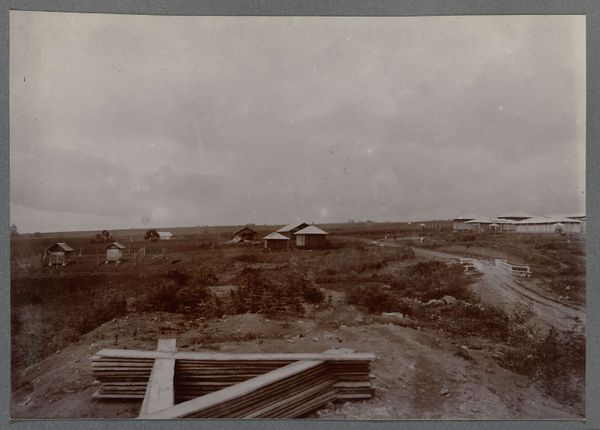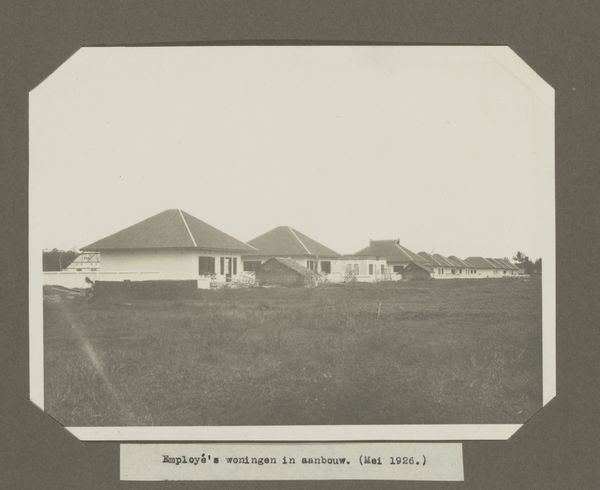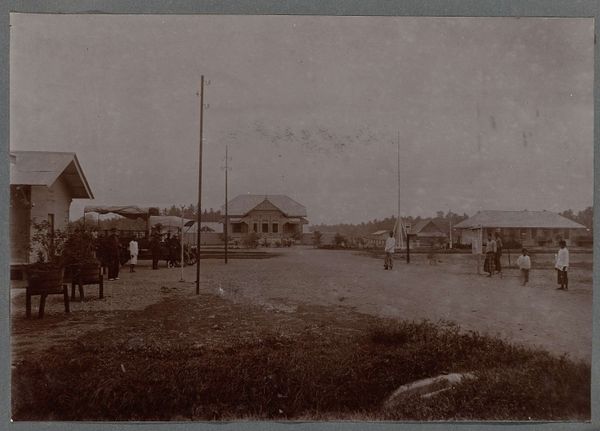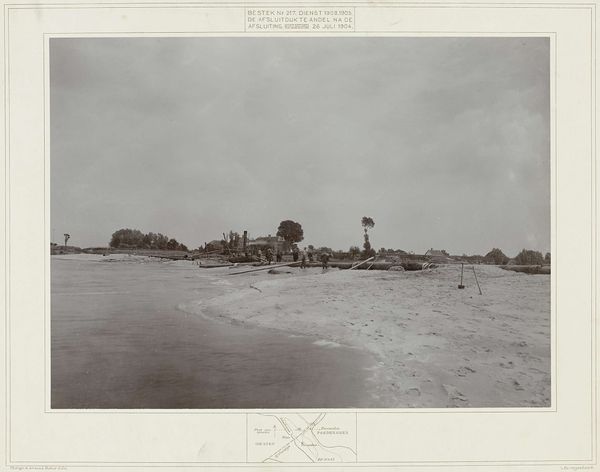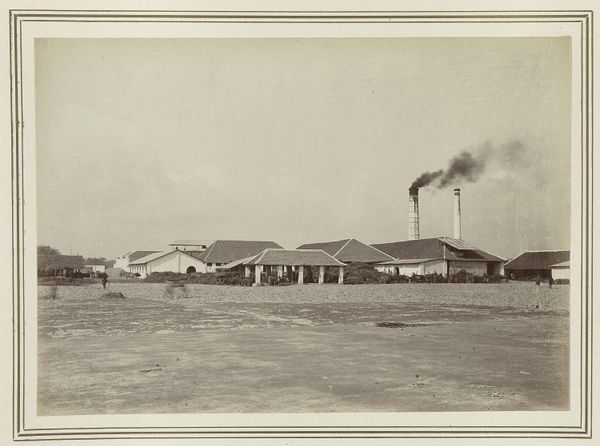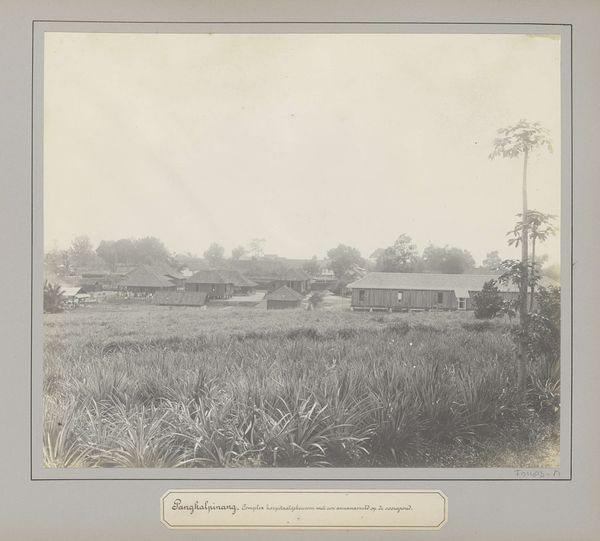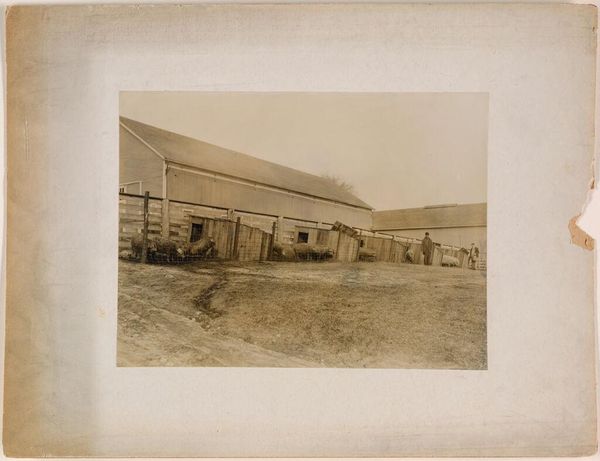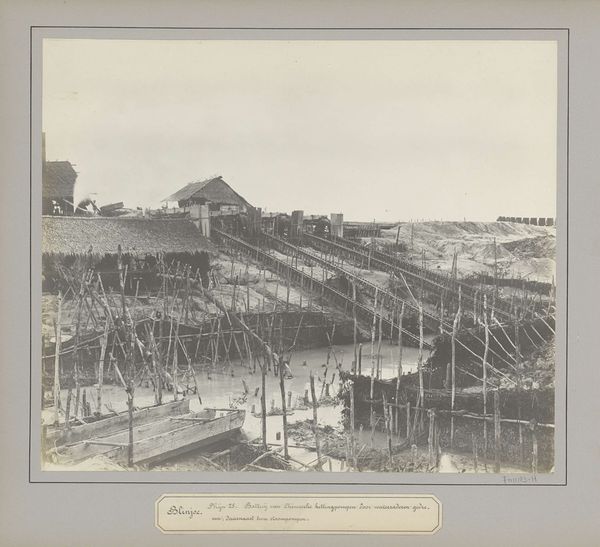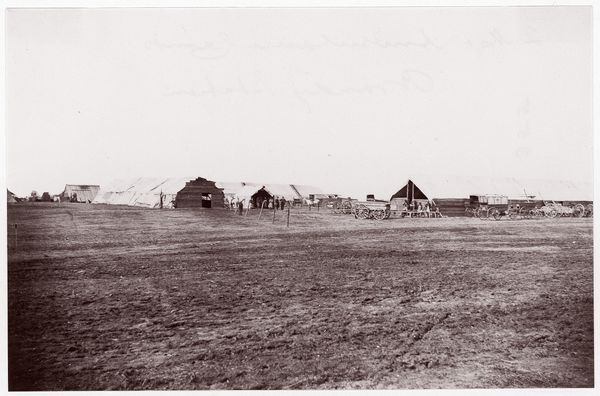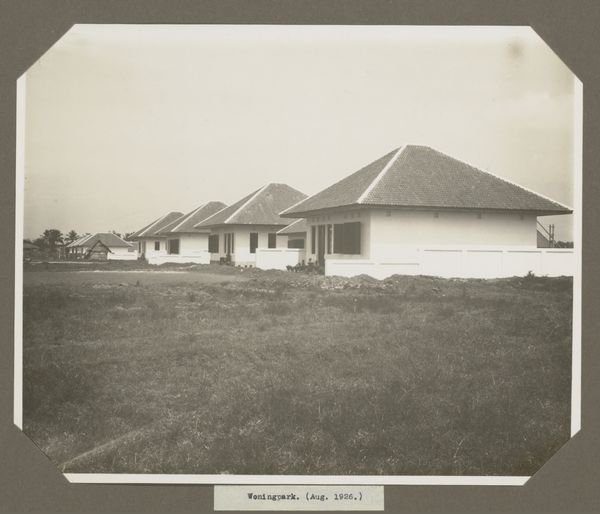
Woningen van Chinese contractarbeiders en loodsen op een tinonderneming te Soengeiliat c. 1900 - 1920
0:00
0:00
anonymous
Rijksmuseum
print, photography
#
dutch-golden-age
# print
#
landscape
#
photography
#
orientalism
#
19th century
#
watercolor
Dimensions: height 240 mm, width 287 mm
Copyright: Rijks Museum: Open Domain
Curator: Here we have an early photograph, sometime between 1900 and 1920, of "Woningen van Chinese contractarbeiders en loodsen op een tinonderneming te Soengeiliat." Editor: It's stark, almost bleached in its tonality. The horizontal composition, dominated by a flat expanse, creates a sense of desolate openness. Curator: Indeed. This image, housed at the Rijksmuseum, presents a visual record of the living quarters of Chinese indentured laborers within a tin mining operation, likely in the Dutch East Indies, what is now Indonesia. It speaks volumes about colonial exploitation and the social hierarchies embedded in the landscape. Editor: The geometry is what strikes me—the sharp angles of the buildings juxtaposed against the organic forms of the trees in the background. The light, although muted, emphasizes the bareness of the structures. They appear functional, not designed for comfort. Curator: Precisely. The image captures not just buildings, but a system. Orientalism becomes explicit as we consider how images like this were circulated, shaping Western perceptions and justifying colonial ventures. These "houses" are just one aspect, a detail in the landscape of exploitation. Consider that "contract" is doing so much work in the title, it naturalizes structures of indenture that effectively functioned as another form of slavery. Editor: Do you think the photographer considered those power dynamics when taking the picture? I would argue the composition has a detached neutrality that reflects the style prevalent at the time. Look at the receding planes, how each building provides perspective and rhythm to the next. Curator: That "neutrality," though, is a construction itself! The act of documenting, selecting this scene, participates in power. Even the organization of the space—workers’ housing situated around production facilities—highlights social and economic inequalities that should force the viewer to analyze the context within race, gender, and class. Editor: Still, I cannot ignore the interplay of shadow and light that articulates space. Regardless of its intention, the formal aspects allow us to dissect the aesthetic strategies. The symmetry and its breaking make this so engaging! Curator: And for me, engaging with those strategies necessitates asking who profits, who suffers, and whose story is told. This print, as a visual object, both reveals and conceals profound power relations. Editor: A somber point of view. Analyzing that dialectic only amplifies my original aesthetic considerations.
Comments
No comments
Be the first to comment and join the conversation on the ultimate creative platform.
